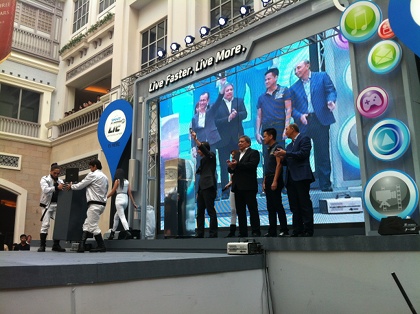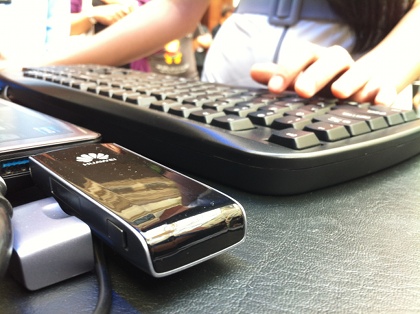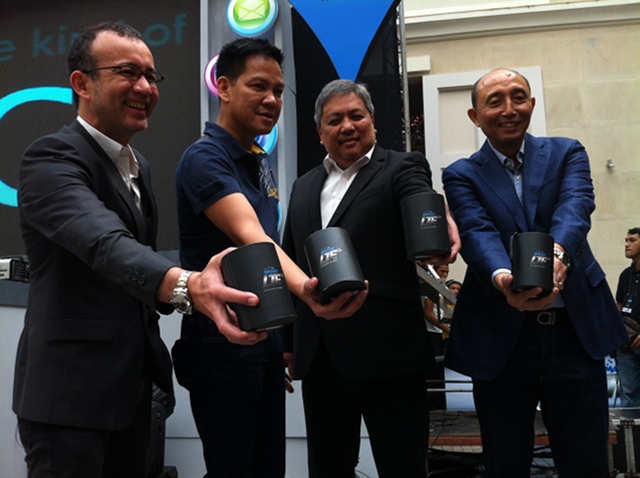SUMMARY
This is AI generated summarization, which may have errors. For context, always refer to the full article.

MANILA, Philippines – The Philippines joined the likes of Japan, Australia, the United States and China, and began commercially offering Long Term Evolution (LTE) service, the next wave in 4G technology, which is considered considerably faster and more consistent than 2G and 3G.
On August 25, Smart Communications launched LTE service for high speed internet surfing via a plug in device.
And “in a month’s time, [Smart] should come out with pocket wifi’s (that will connect to other devices) including phones,” said the company’s Executive Vice President for the Wireless Consumer Division Noel C. Lorenzana at the public launch for their LTE service.
Rival Globe Telecom will also be unveiling phones and broadband options for LTE in September.
Philippine Long Distance Telephone Co Public Affairs Head Ramon Isberto explained that surfing with LTE will be like driving over the zippy Metro Manila Skyway, instead of traveling on the traffic-packed EDSA, a main thoroughfare in the capital.
The LTE network should offer download speeds of up to 42 Mbps said Lorenzana who added that the network was so fast he was able to download a 2-hour movie in 12 minutes.
Like with the Skyway, the faster connection will come at a cost. Smart is offering a Plan 3500 that charges customers P3,500 a month for 10 gigabites (GB) of data, after which they will be charged P450 for each excess GB. The plan comes with a free dongle and locks the customer in for 2 years.
Targeting early adapters
Smart is targeting early adapters, and is especially keen on appealing to gaming enthusiasts and businesses.
According to Isberto, PLDT will roll out the network in places where they think technology trendsetters are likely to be, such as Cebu, Davao, Boracay and areas of Metro Manila, including Binondo, Mandaluyong, Makati, parts of Quezon City and sections of Manila. In areas where LTE is not yet available, the device will pick up HSPA+, HSPA, 3G and 2G.
Meanwhile, Lorenzana explained that they would be working with businesses to customize specific LTE plans for them without the standard consumer cap.
“In advertising, imagine the files you can send out and transfer, or in BPO. with speeds like this there’s a lot you can do… it’s a different experience all together,” he said.

At the same time, the device is expected to be well received by gaming enthusiasts, and help the company gain traction with a younger crowd, explained Isberto.
“Gaming will become an important language…. What we think will happen is that you will see more games in education, that’s why it’s a kind of language. (For) kids who grow up in a digital environment, games are second nature,” he said.
Betting on LTE
Smart wants to add 10,000 subscribers to the LTE network by yearend, according to Lorenzana.
“3G was launched in 2006 but the pickup wasn’t until 2009, and (it really caught on) with the advent of more affordable smart phones. If we parallel that with LTE, the lag probably won’t be as long. When [customer take-up] hits the spike it will be exponential,” said Lloyd Manaloto, Head of Broadband and Data Services.
Given the expected increase in business it’s no surprise both of the Philippines leading telephone companies are betting on LTE and that neither wants to be left behind.
A key difference consumers will want to be aware of is that Smart’s LTE network will use 2.1 gigahertz, while Globe’s will be on 1800 megahertz. The different frequencies will have implications for which phones are compatible with each brand.

Rolando Peña, the head of the technology group for PLDT and Smart, said Smart will likely look for a tie-in with Japan’s NTT DOCOMO which already has phones that operate on 2.1 gigahertz and has one of the world’s largest number of LTE subscribers — 5 million customers according to Japan Daily Press.
Meanwhile Globe’s CEO Ernest Cu said a key part of their strategy is to target “large contiguous coverage areas,” starting with Makati. So going forward, it will be important for consumers to monitor and report on how comprehensive coverage is under the two networks.
After all, as Lorenzana put it, “We need to shape the future. We cannot be victims of the future. We cannot be afraid of technology,” – Rappler.com
Add a comment
How does this make you feel?
There are no comments yet. Add your comment to start the conversation.